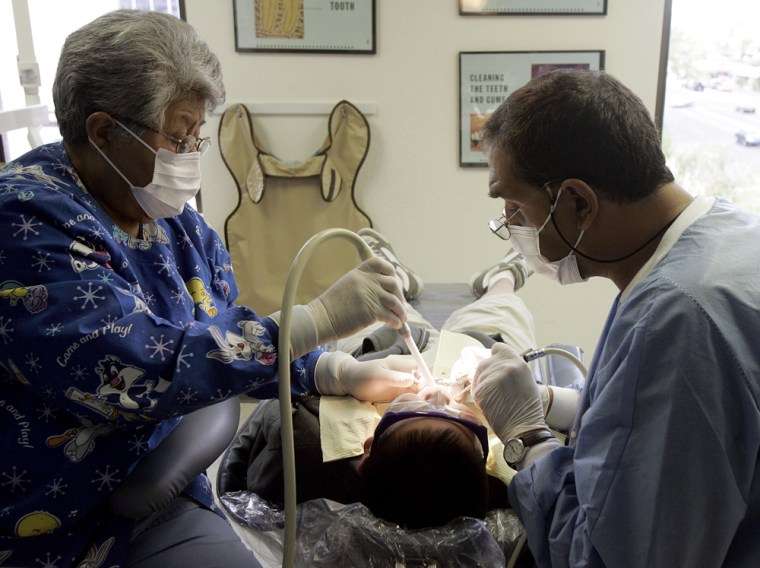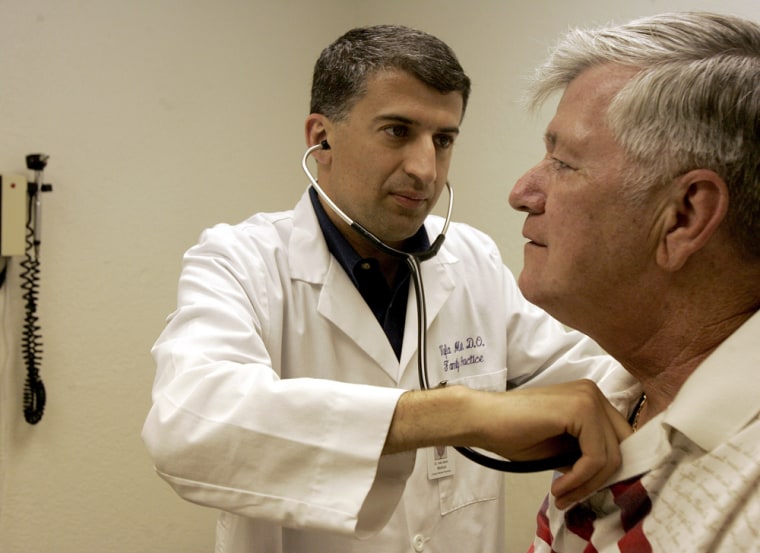When Jennifer Carter moved from her reservation to Pierre, S.D., a few years ago, she went from seeing Indians like her every day to barely seeing any. But the first time she visited the South Dakota Urban Indian Health clinic, she knew she had found her place.
There, she met Indians just like her, people she could relate to and who made her feel comfortable. They were from various tribes. They no longer, or never did, live on a reservation.
“When you all get together, it’s like home,” said Carter, a single mother of four who used to live on the Cheyenne River Sioux Reservation in Eagle Butte. “It makes me feel like home.”
To urban Indians, that connection to their culture often means as much as the medicine they are prescribed.
But now that relationship is threatened by President Bush’s 2007 budget proposal to zero out the $33 million allocation for urban Indian health clinics. At least 17 of the 34 clinics across the country may have to close their doors, while the rest would be forced to cut services.
Some 60 percent of American Indians and Alaska natives live in urban areas, according to the Census Bureau. And for years — decades in some cities — they have been receiving health care at clinics in or near the cities where they live. Providing health care to all Indians has been part of the government’s trust responsibility.
Tribes see breach of trust
“Many tribes are viewing this as an assault on trust responsibility,” said Geoffrey Roth, executive director of the National Council of Urban Indian Health.
Sen. John McCain, R-Ariz., noted during a Senate Indian Affairs Committee hearing last month that even though the proposed cuts could be restored, “I think some of these cuts ... clearly sends out the wrong signal to Indian Country as to what our belief and our fulfillment of our obligation to Native Americans is all about.”
Urban Indian health care clinics, located in 21 states, are funded by the Indian Health Service, but operate as private clinics under contract with the government. Whether a city has an urban clinic depends on the population, health status and poverty level of Indians. They are located in cities as large as New York and as small as Butte, Mont.
Clinics differ in their services — some offer primary care, others just referrals — but most have programs vital to Indians. Many offer comprehensive medical care ranging from dental and vision to mental health. Most have alcohol addiction and diabetes programs, because of the prevalence of those diseases among Indians.
The amount patients pay for services varies from clinic to clinic. Some are free; others have a sliding fee schedule. Last year, the clinics treated more than 106,000 Indians.
A unique set of health risks
Compared to the U.S. population as a whole, urban Indians have a 178 percent higher death rate from alcohol abuse and a 54 percent higher death rate from diabetes, according to a 2004 study by the Seattle Indian Health Board’s Urban Indian Health Institute.
At the Hunter Health Clinic in Wichita, Kan., outreach workers who help diabetics with exercise, diet and foot care would lose their jobs, and mental health and alcohol and substance abuse programs would be cut, said Susette Schwartz, clinic chief executive officer.
Isabelle Gyongyossy, a 78-year-old Oglala Sioux patient at the Hunter clinic, has diabetes and heart disease. She takes eight pills a day, uses a walker and isn’t sure how she will cope if she can no longer use the clinic’s programs.
“If they take the funding away, I’ll have to pay for a lot of things. I won’t have any food,” she said.

Urban clinics also offer services many other clinics don’t, such as transporting patients to and from appointments, something many older patients need.
In Bush’s 2007 budget proposal, it is suggested that urban Indians can go to community health centers instead, since those centers are slated to receive a $181 million increase that would build or expand 300 sites.
Alex Conant, spokesman for the White House Office of Management and Budget, noted the increase and said: “Urban Indians, like all Americans, continue to benefit from the president’s initiatives to make health care more affordable and available.”
But clinic directors and urban Indians say increasing community health center funding doesn’t solve the problem.
Miles from medical care
Urban Indians may be reluctant to seek care from a non-Indian clinic. Instead, those patients will likely wait to receive medical attention until their condition deteriorates, and then they will fill emergency rooms. Many urban Indians are too far away from reservations to return there for medical care through the Indian Health Service.
“They just won’t get primary care because they’re not going to drive those kinds of miles,” Schwartz said. “They don’t have money for gas. A lot of them are disabled and unable to get around.”
Community health centers are already “stretched to the limit,” said Amy Simmons, spokeswoman for the National Association for Community Health Centers. The proposed program expansion isn’t designed to meet the needs of urban Indians, Daniel Hawkins, the association’s vice president for federal, state and public affairs, said in a recent letter to Bush.
“My fear is losing our Indian identity,” said Schwartz, the Wichita clinic CEO. “We would be able to stay open, but would lose our Native American programs.”
At the Wichita clinic, which also operates as a community health clinic, urban Indians receive free services and prescriptions. Some 2,700 Indians visited the clinic last year.
Seeking a cultural connection
If the funding is dropped, urban Indians there could get health care from the community clinic. But they would miss the cultural connection they enjoy now because most Indian workers would lose their jobs, Schwartz said.
“We have so many people who don’t know exactly why they’re so messed up and out drinking and abusing until they talk to someone who understands Indian history. There’s generations of anger that only someone who understands can connect the dots,” Schwartz said.
Marjorie Bear Don’t Walk, executive director of the Indian Health Board of Billings, Mont., said if Bush’s proposal is approved, her clinic will be out of business.
“We don’t turn away anybody. All of the chairs are filled in the lobby and we only have clinic from 1 to 5,” she said. “Most of them will have nowhere to go.”
Cynthia Jurosek, who is both a patient and a temporary employee at the Billings clinic, wonders what will happen to all the people who rely on the clinic for transportation, and to the patients in mental health and substance abuse programs.
“All these urban clinics, they belong to the Indians,” said Jurosek, a Crow Indian. “It’s where they can go and feel good about themselves. They’re treated with respect. And that’s what I will lose here.
“I will lose people who are truly interested in helping me get well.”
